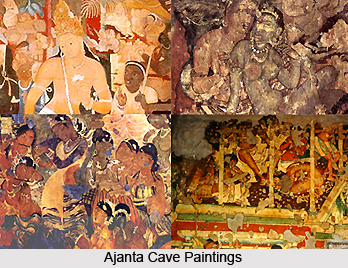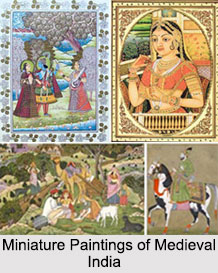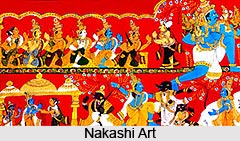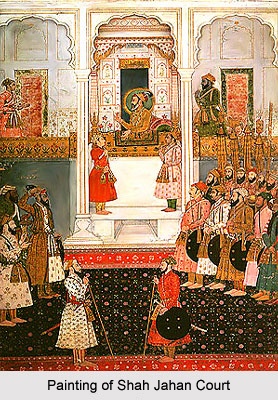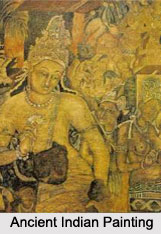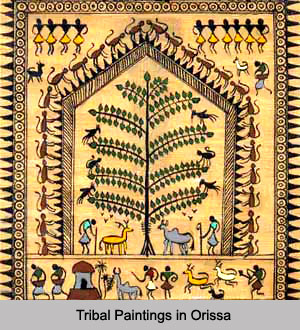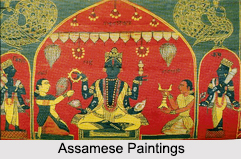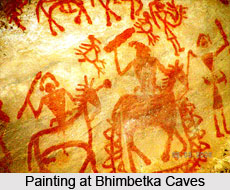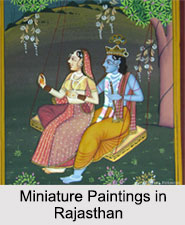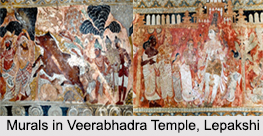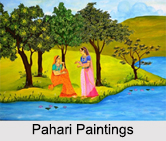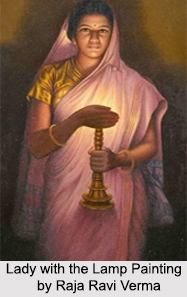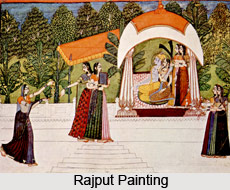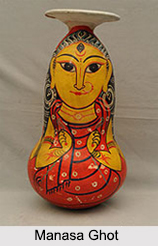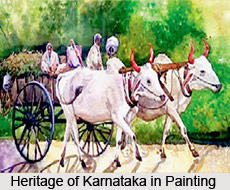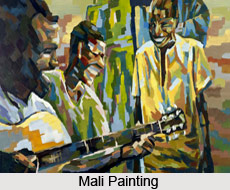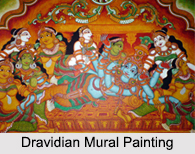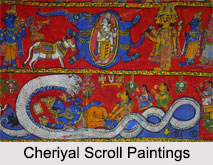Punjabi Mural was introduced during the reign of the Mughal Dynasty. Mural paintings had begun in India in the first century A.D. with Ajanta Murals which later travelled to Ellora Caves, Bagh, Sigriya and Central Asia. The murals found in Buddhist monasteries and other places bear resemblance to the paintings in Ajanta. This form of art slowly travelled far and wide and every ruler had their palaces, forts and temples painted and decorated with murals.
Mural painting in Punjab flourished during the reign of the great Mughal King, Akbar. As illustrated by a Punjab historian, Muhammad-ud-din Fock, the evidence of murals has been visible in the Lahore forts. According to him the walls of the Lahore Fort has been decorated with images of Mirza Rustam who was an ex-Emperor Khandahar, Khan Khanan nad Khan Azam and other places. One of the murals depicts Jahangir seated on a carpet and flanked by Prince Khurram and Sultan Parvez on his left and right. Other kings like Asaf Jah, Mirza Sharif, Jagan Nath, Karan Singh, Bir Singh and Ram Das have been painted on the walls. The Sultans of northern India encouraged mural painting inspite of Islamic inhibition to drawing of human figures.
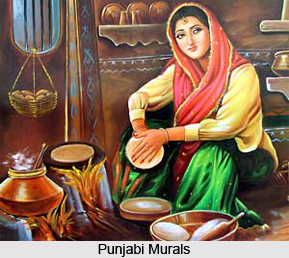 Style of Punjabi Murals
Style of Punjabi Murals
Mural art received much encouragement under the Mughal Dynasty as is evident from the frescoes painted in the interior walls of their palaces and forts. Akbar was the first to use frescoes as a decorative form of architecture. Even Jahangir had also ordered his palace to be decorated with paintings of great artisans. The paintings depicted images of his family members, harem scenes, and drinking parties. One of the finest examples of Mughal frescoes is evident from the colourful designs of the Rangmahal that was built by Shah Jahan in 1630. It is situated near Jagadhiri. Mural paintings were in vogue not only among the aristocratic class but also admired by the lower levels. The paintings are also evident in the small octagonal tomb of Pirbandi Nakshawala that was constructed during the Mughal period at Sirhind. The tomb has been completely covered with paintings of flowers. Even a Hindu temple constructed during the Mughal period at Sat Sai in the middle of the seventeenth century at Gurgaon district has beautiful coloured frescoes.
Kashi work or glazed title decoration was initiated into North West India from Persia. Many Muslim monuments in Punjab stand as confirmation of this popular form of art. Kashi paintings are evident on the tombs of Rokin-i-Alam and Bahawal Hak at Multan that were constructed during the Slave and the Khilji Dynasty. The mosque of Wazir Khan erected in 1634 is considered as the most attractive monuments designed with glazed tiles in Lahore even now. Kashi paintings were generally used as an adjunct to the frescoes during the Mughal period. During the late Mohammedan and early Sikh it was common among the rulers to adorn their woodwork of buildings, doors and windows with paintings. Examples of these paintings are also visible in the existent murals of a Mari erected in 1788 A.D. in the Mari Mustafa, a village in the district of Faridkot. There are also evident in the temples of Shri Nam Dev erected in the eighteenth century at Ghoman located in Gurdaspur District, in Ramnagar Palace at Jammu and in a Baradari at Kartarpur. Murals that were accomplished in the first decade of the nineteenth century are also famous. The Jahazi Mahal at Shujabad located twenty five miles south of Multan houses remarkable frescoes. This was built by Muzaffar Khan in 1808. However the art of Mural Paintings began to languish during the eighteenth century and towards the end of the eighteen century the pictorial art remained almost desolate.
